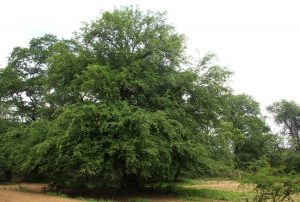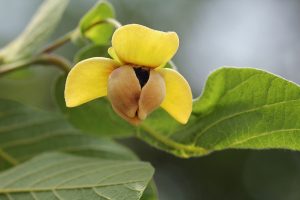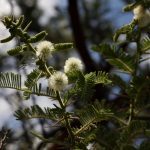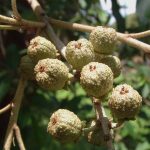TREE LIFE
APRIL 1989
SUBSCRIPTIONS
Subscription rates remain unchanged, and will fall due next month for the year April 1989 – March 1990.
Please send your subs to the Hon. Treasurer at P.O. Box 2128, Harare. Cheques or Postal Orders should be made payable to the Tree Society of Zimbabwe. Cash should be handed personally to any Committee member or sent by Registered Post.
MASHONALAND CALENDAR
Tuesday 4thApril: Botanic Garden Walk, 1645 hours for 1700 hours. Meet in the car park.
April 15th – 19th: Outing to Kariba
Saturday 22nd April: Mukuvisi Woodlands meeting at 1500 hours. Meet at the Paget Road/ Inyanga Crescent gate.
Sunday 23rd April: Bushman’s Point Lake McIlwaine. Members of the Venerable Order of Pre-historians (Prehistory Society) may join us. We will meet at Bushman’s Point at 1100 hours to enable us to enjoy the game which we may see en route.
MATABELELAND CALENDAR
On Sunday 2nd April we go to Makoveni Ranch, Fort Rixon, the home of Jeanette Schur. Meet at Ascot Car Park (lifts already arranged) at 0830 hours.
On Sunday 7th May : The Mangwe trip is still on the cards, details next month. By then we should be thinking “QDS”
MATABELELAND NOTES
With the re-opening of the Toghwana Dam (Matopos) to the public, the new near vertical road, caused some problems, but we had a full day’s outing there on Sunday 5th March. The walk towards Inanke Cave was under a canopy of trees and we spent much time identifying the species which are in that particular area. In all we found 75 species, the usual ones being Afzelia quanzensis (full of pods), Albizia tanganyicensis (red peeling bark), Artabotrys brachypetala with its very distinctive curled back flower stalks, Brachylaena rotundata, B. huillensis (reminiscent of European holly), Barleria albostellata, Markhamia acuminata with a leaf like the mulberry, Ochna glauca – in the sun the blue green leaves drooped but those in the shade were easily identified. We emerged from the trees to find the rest of our group lazing by a pool and waterfall, surrounded by Ficus ingens, F. glumosa, F. capensis, Euphorbia griseola and E. ingens. On the way back we saw the paper bark Commiphora marlothii, C. mollis, Croton gratissimus, Cassia abbreviata, Diospyros mespiliformis, Dodonaea viscosa (with its bright sticky leaves), Teclea nobilis, Vitex payos, Ptaeroxylon obliquum, large Elephantorrhiza goetzei showing the wooden threads left after the pods had gone; Pterocarpus angolensis had beautiful green “hedgehog on a raft” seeds on the trees, a fallen wooden banana sent us hunting for Entandrophragma caudatum, and we identified the blotchy yellow-green leaves of Erythrococca trichogyne, Tarenna neurophylla and T. zimbabwensis (with distinctive ‘assegais’) Strychnos matopensis and S. madagascariensis. We had lunch under a Combretum zeyheri which had large fruits above and underfoot – accompanied by mealies cooked to perfection by a non-walking member of our party. Along the road towards Mtsheleli Dam we passed Euphorbia cooperi growing on the kopjes and Ficus tettensis were existing in tiny cracks in rocks. A large sable bull enviously watched as we took afternoon tea under the leafy shade of Brachystegia spiciformis.
Betty Blake
BOTANIC GARDEN WALK : MARCH 1989
After a short discussion we decided to address the FABACEAE (= Papilionoideas). This is one of the three families that have legume pods. These legume bearing plants are all grouped into the order the FABALES (= Leguminosae). The FABALES is related to the ROSALES with the suggested link being the CONNARACEAE. The flower of the FABACEAE is the classic pea flower (called papilionaceaes). The old name Papilionoideas referred to this flower but the modern tendency is for all family names to follow a particular genus name within that family. The genus Papilio does exist but it is not a flower, it is a butterfly. In order to select a new family name the bean, Faba, was chosen, resulting in the FABACEAE. Exactly the same problem resulted in changing the Umbellifarae to APIACEAE, the labiatae to LAMIACEAE and the compositas to ASTERACEAE. It also means that all families end in – CEAE instead of some ending in –rae and others in- tae. We did not see any flowers on the walk so I will concentrate on the vegetative features of the family. All these notes refer to local tree species, exceptions may occur elsewhere. Whenever you see leaves that are pinnately compound once with an odd leaflet then get the cogs working along these lines, if the leaves (not the leaflets) are opposite then the tree is either in the BIGNONIACEAE or is Fagaropsis (which has gland dots) – easy. If the leaves are alternate then look at the attachment of the terminal leaflet to the rest of the leaf. If the three end leaflets are all attached at a single point then the tree probably belongs to the SAPINDALES, which contains seven families; RUTACEAE, SIMAROUBACEAE, BURSERACEAE, MELIACEAE, ANACARDIACEAE, SAPINDACEAE and MELIANTHACEAE. If the mid vein (rachis) of the leaf extends beyond the first pair of leaflets and then there is a change in colour/a swelling/ a pair of stipels or some change before the attachment of the terminal leaflet, then the tree belongs to the FABACEAE – easy!! This “bump” also occurs in trifoliolate leaves in the same family although Meg pointed out that some of the CAPPERACEAE could be confused as they often have strange swellings just before the terminal leaflet.
We began with Craibia brevicaudata from the medium to high altitude forests where it may grow to 50m. It has alternate leaflets and the petiolules are covered in wrinkles. Bolusanthus speciosa grows on the heavier soils, the leaves are often sickle shaped. Tom’s specimen comes from Chizarira. Next to it is

Pterocarpus lucens. Photo: Bart Wursten. Source: Flora of Zimbabwe.
Pterocarpus lucens. In the Valley these always have a distinct peeling bark like a guava, but this is not apparent in those that grow in Gonarezhou. Tom’s lacks this bark and comes from Victoria Falls – will it develop in time or do all the Victoria Falls specimens lack it? We saw the larger leaved Pterocarpus rotundifolius, firstly the susp. Polyanthus var, martini with many leaflets and later supsp. rotundifolius with only 5 (sometimes 7 leaflets). Later in the walk we looked at the large stipules on P. brenanii that grows in Gonarezhou and is common around Kariba. We examined all the species of Lonchocarpus. All have pairs of stipels on the leaf stalk at the point of attachment to the leaflets. We began with the common L. capassa; found the simple leaves of L. nelsii (obviously a unifoliolate compound leaf) that grows with A. erioloba, C. imberbe at the edges of vleis associated with Kalahari sand; backtracked through the tall Hyparrhenia grass to find L. eriocalyx and L. bussei. this is the first time Tom has ever shown us his L. eriocalyx which consists of three leaves on a 5cm stalk next to C. apiculatum between the L. nelsii and the Herbarium. It usually has larger leaves and grows on the schist hills in the Zambezi Valley (it is not yet on my key). L. bussei demonstrated the lateral spurs common on Lowveld – arid trees. Apparently it occurs in Mudzi and Mazowe although I have only seen it in the Valley where it is common at the base of the escarpment and around Chirundu Hill as well as in jesse.
In the Zambezi Valley section we looked at the distinctive Dalbergia martini, covered in sticky glands. It creeps more than D. melanoxylon which we found later alongside Ozoroa longipetiolata. This species also has short lateral shoots which may form spines. We moved on to Erythrina livingstoniana with its distinct leaflets and then began our age old conflict with E. abyssinica vs E. latissima. Did we sort it out? Maybe E. abyssinica has fewer spines on the trunk and smaller leaflets that are covered in a greyer coat of matted hairs along the under surface. E. latissima has huge leaflets, lots of spines on the trunk and is contained to granite kopjes. Tom’s specimen flowered this year for the first time after 22 years of growth. The mystery tree in the Highveld Section near the O. longipetiolata is a Sephora thought to have been introduced to Zimbabwe from Asia. Our last tree for the day was Ormocarpum kirkii with its “worm-o-carpum” flowers. Thanks again, Tom, its much appreciated!!
Kim Damstra
CHEGUTU NOTES : FEBRUARY 1989
Our first meeting this year was held on the banded ironstone ridges over looking the new Clifton-off-River Storage dam, and we started with a bonus sighting of Crowned Cranes and Spurwing Geese at the water’s edge. Having had rain, all was fresh and green, trees in full leaf. Right next to one another were three Brachystegia : B. glaucescens, B. boehmii and B. spiciformis so that we could compare leaves, bark and “jizz” to borrow from the birdwatchers’ phraseology. General impression, size and shape – which can be helpful when seeing trees from a distance; add in a Julbernardia globiflora and we had a useful few minutes refreshing rusty memories. The glories of the ridges were the B. glaucescens, Manilkara mochisia with its leaves in characteristic rosettes formation (we had to wait for another specimen to examine as a horrid smell chased us on from the big one), and several truly large Tarenna neurophylla. This we more often see as hardly more than a spindly under storey shrub, but here they grow to full tree size needing two hands bigger than mine to encompass the trunk. In hot October-November these offered some welcome greenness and shade when the softer looking trees were bare. Younger specimens enabled us to look for the inter-petiolar stipules, and to see the spear head growing tips which our visitor from Bulawayo, Mr Archer, pointed out to us. Cassine aethiopica contrasted with C. matabelica, the former’s leaves generally rounder and clearly a spirally arranged along the branchlets, the latter’s leaves longer and slightly re-curved along the midrib, alternate along the branchlets with, yes, just as we have been told, always some opposite on the same branchlets. All over the ridges

Margaritaria discoidea. Photo: Bart Wursten. Source: Flora of Zimbabwe
Margaritaria discoidea and Hippocrates parvifolia, interspersed with Erythroxylum emarginatum created a child’s wonderland, Margaritaria is full fruit, not yet ripe, and others yet to flower. Canthium frangula although so spiny that it could make a good thief deterrent hedging, also grew to more tree-like proportions than we generally see, but Rothmannia fischeri, another RUBIACEAE, with inter petiolar stipules, while plentiful, were here rather small –elsewhere on these ridges they are bigger and we have seen them flowering, a new experience for us. Haplocoelum foliosum was present, scattered amongst the Canthiums, and also Olax dissitiflora, which is widespread along the ridges, and fast becoming one of my favourite trees for its grace and hardiness. We tried the cyanide test, crushing leaves and waiting for the chemical reaction, but it was clearly not the right time of the year for this to be proved – when IS the right time, Kim? Euphorbia ingens and E. espinosa were both present, whilst other members of the family EUPHORBIACEAE to be seen were Croton gratissimus, with aromatic leaves; Pseudolachnostylis maprouneifolia, the duiker berry which gives such joy in its winter foliage and is a useful food source for game, cattle also enjoy the berries; Securinega virosa, the snow berry, now re-named Flueggea virosa, which we see scattered along the route to schools in the country when the fruit are ripening; and further down the hill, Bridelia cathartica, its knobs being the developing fruit at this time of year; and of course, Margaritaria also belongs to this group. Combretum zeyheri and C. hereroense both carried developing fruit, the latter already turning the two tone chocolate brown shade that makes the tree so conspicuous for so much of the year. A Gardenia was put to the “tongue test” and proved to be G. ternifolia – thank you for that quick way or sorting out when I find so problematic most of the time. Vangueria infausta did prove to be rather hairy, and had smooth grey bark. Another tree which can be expected to have powdery bark, but here did not was Strychnos innocua – I keep thinking it may be S. madagascariensis but had to concede that the rest of the party were correct in the diagnosis. S. potatorum was present on the ridge, its light grey trunk and yellow-green leaves ending in a Y shape at twig’s end, aiding memory; and S. spinosa at the bottom of the hill in mixed woodland. Dichrostachys cinerea, Acacia goetzei, A. karoo and A. amethythophylla and Ziziphus mucronata variously clutched at legs and clothes, across the road from our cars was A. nilotica with distinctive green pods developing. Dalbergia melanoxylon, freshly dark green which we know well in Chegutu was very much in evidence amongst the rocks as well as on an anthill where we looked at Ormocarpum kirkii, whose flowers had just lost their lilac shading and turned brown. Many more old friends were around but to end our morning, we stopped to examine

Friesodielsia obovata. Photo: Bart Wursten. Source: Flora of Zimbabwe.
Friesodielsia obovata in full bloom, its creamy yellow green flowers, looking exotic and promising refreshing fruit later in the year. It was enough for the morning, we cannot absorb too much at one time, but these ironstone ridges are so rich in the variety of plants that we shall surely return some day, and still find many things to enjoy. A.B.
Sidenote : My husband and I are embarking on a tree growing project for a local nursery, and for our own interest, and would welcome suggestions for trees to grow, methods of propagating them etc. We have been given some really special seed by good friends, and are collecting others as they mature. The most heartening thing, though, is to see the burgeoning enthusiasm and interest being shown by our staff, who keep coming to say “We must try these” or “those” and who say “Now we do not just walk in the bush, we are looking at trees all the time”. For us this remark has made the project doubly worthwhile.
Ann Bianchi
Thank you Ann for whetting our appetites for our proposed outing to this interesting spot on June 18th.
Acknowledgement and thanks to ‘MEN OF THE TREES’ November, 1988 for this snippet
TREE SOCIETY OF ZIMBABWE :
Headquarters is in receipt of several copies of Tree Life, Journal of the Tree Society of Zimbabwe. There are frequent excursions, in both the Harare and Matabeleland regions. Some sound very informative, with members positively competing to identify specimens, and all learning a lot from the shared information. Other excursions are clearly more adventurous. Advice for those on the Zambezi Valley trip was “…a lion, stand your ground and look him in the eye, and for a buffalo, get up the nearest tree or roll into a ball.” We have a copy of the subsequent newsletter, so presumably at least some members did as instructed. We have had an invitation from Men of the Trees for any of our members who will be in UK at the time to attend an International Conference at Reading University on 6, 7 and 8 July. Any member interested please contact the Editor at P.O. Box 2128, Harare for further details.
LEUCAENA MAY REVOLUTIONIZE FARMING IN TANZANIA
(Tanzanian farmers are set to benefit greatly from a tree they once considered useless, thanks to a one man’s tireless efforts to popularise the use of leucaena) In many parts of Tanzania, leucaena is widely found and like any other tree species, its utilisation hardly exceeds that of providing timber and shade. Tanzanian farms have been too slow in recognising the hidden potential of this multi purpose tree. For example, a villager at Msanvu, in Morogoro Region, says a few years ago he made sure there were no leucaena in his shamba, because “it was a useless bushy shrub which only crowded my shamba for nothing.” In Dar es Salaam and in the neighbouring regions leucaena is simply utilised for fences, boundaries and beautification. “I wish farmers knew the inside story of the tree” says Jackson Msalilwa, a forestry technician at the Sokoine University of Agriculture (SUA) in Morogoro town. Indeed Leuceana is a multi-purpose tree, “Apart from being a nitrogen fixing tree” says Msalilwa “it is one of the fastest growing and most useful trees with a wide assortment of uses.” It provides first class timber and fodder forage besides enriching and fertilizing the soil. It also provides firewood with much more heat and less smoke. It is equally useful for intercropping with cereals and to a lesser extent can be utilised as food. It is against this reality that scientists at SUA are engaged in an intense research and promotional drive aimed at exploring and publicising leuceana’s potential to farmers.
Although the tree was introduced in Tanzania by the Germans during the 19th Century, it was not until 1975 that someone, perhaps out of sheer academic interest, thought it could be a useful tree. That person was Dr. Luther Lulandala, then a third year university student. Upon graduation, he embarked on ambitious research, ordering varieties of leucaena seeds from the University of Hawaii, and spent the rest of his time in the agro-forestry experimental blocks, trying to discover how he could make the tree widely acceptable. His findings were very encouraging. Today he openly admits that the tree can have a far reaching impact on farming in Tanzania, as proven by his experiments, as the plant has a very high rate of nitrogen fixation. “In the countries where growing crops require hard currency to import fertilizers, this tree is more than a necessity to Tanzanian farmers” observes Dr. Lulandala. The tree, like most other legumes, forms mutually beneficial partnership with soil bacteria of genus Rhizobium, which penetrate young rootlets and multiply to form nodular swellings that serve as factories for nitrogen fixation. Experiments conducted by SUA have shown that a hectare planted with 2500 leucaena trees was able to fix between 1970 and 2000 kilograms of nitrogen annually, which reinforces Tanzanian scientists’ argument that the time has come for farmers to inter crop leucaena with rice, maize and other cereals. When leucaena is intercropped with cereals, say the scientists, it should be kept pruned so that the branches doe not shade the nearby crop. The pruned leaves and twigs should be used as a nitrogen rich mulch and the larger branches for poles or fuel. This can lead to continuous yields of food and fuel from the same plot, without even using other inputs or degrading the soil scientists at SUA advise.
Furthermore, tests have established that leucaena is a good source of charcoal, with a heating power of between 0.2 to 0.7 calorific value, compared to other sources of charcoal which is between 0.1 and 0.6 calorific value, adds Mr. Mealilwa, SUA’s forestry technician. He confirms that a 15 metre kiln used recently to make charcoal from Leucaena produced between 35 to 40 sacks of charcoal as compared to about 25 sacks produced by ordinary trees when processed in the same kiln. As cattle feed, leucaena which reaches 18 meters high and a diameter of about 35 centimetres is preferred to grass, although animals may be slow to accept it when first introduced to it. Elsewhere in the world impressive milk production has been recorded from leucaena fed animals. For instance, Friesian cows stocked at 6.1 large animals per hectare on leucaena grass in Hawaii (USA) produced an average of 9770 kilograms of milk per hectare annually over a period of 12 years with no indication of toxicity and no problems with breeding.
In another leucaena related research at Gairo, in Kilosa district in Morogoro SUA scientists are busy trying to establish if the ‘wonder’ tree will have the ability to thrive on poor soils and in areas with a long dry season. The idea to start the Gairo agro forestry experimental site was born through suggestions from various people, including SUA’s Chancellor. On the general promotional drive, already SUA has started to distribute leucaena to various parts of the country including Iringa, Mbeya and Arusha. In Morogoro where the university is situated, the tree is already being recognised as one of the most useful plants with farmers planting it deliberately rather than accidentally as was the case before.
Leucaena species originated in Central America and spread throughout the world, reaching the tropics, including Tanzania during the last two centuries. It is usually raised from seed.
Acknowledgement and thanks to the All Africa Press Service, August 31st 1988



